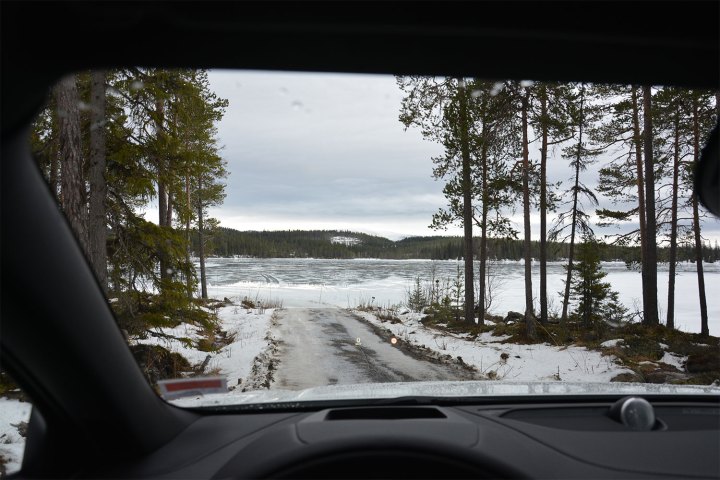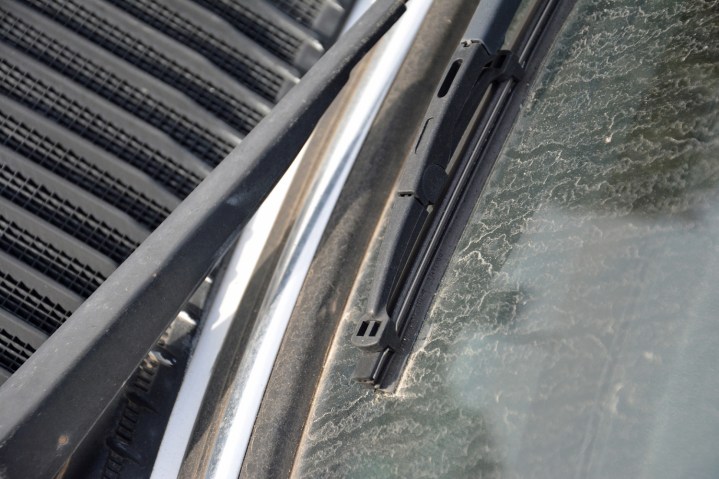
The leaves are changing, the temperature is dropping, and restaurants are moving stews back to the top of their menus. It’s the soothing calm before the storm. In many parts of the country, driving to the grocery store will soon involve trekking through snow, and carefully maneuvering your way around ice patches.
Further reading
These factors make driving more stressful, but winter weather puts unusual strain on your vehicle as well, placing demand on parts and equipment you may have overlooked during the sunny heyday that was summer. Lucky for you, we’ve put together a few tips on how to winterize your car and come out unscathed when the snow finally starts to melt.
Shelter your car

If you have the ability to put your car in a garage or under an awning, we recommend taking full advantage of it. Waking up in the wee hours of the morning to scrape ice off your windows isn’t particularly fun or easy, and keeping ice off your paint will preserve your ride’s finish. Parking your vehicle in a warm, dry area will make leaving in the morning immensely easier. If you don’t have access to covered parking, you can buy a cover at any hardware or auto parts store to keep the snow and cold out. Remember to wash it regularly to get salt off the body, too.
Check your battery

Car batteries and humans have one thing in common: they hate being cold. Even a working battery can refuse to turn over if it doesn’t like the weather, because low temperatures can reduce a battery’s power by up to 50 percent. Consider replacing your battery, or, at the very least, take it to the mechanic and get it checked before the worst of winter hits. The tests aren’t always 100-percent accurate, so if you’re concerned, simply opt for a new one or purchase a pair of jumper cables. Either way, keep an eye on your battery posts throughout the year and use baking soda, water, and a small wire brush to keep them free of corrosion.
Schedule an inspection

Just like a visit to the doctor, it’s never a bad idea to bring your car to an experienced professional to make sure everything is in working order. Feel free to skip this step if you can perform the checkup yourself, but with the extra strains of winter, a second opinion is never a bad idea.
A mechanic will inform you whether your car’s various systems and parts — the radiator, brakes, etc. — are in tip-top condition, while ensuring your car’s fluids — antifreeze, brake fluid, oil, etc. — are at the correct levels. We also recommend leaving at least a half a tank of gas in your car at all times to prevent your fuel lines from freezing. Changing the oil before winter isn’t a bad idea, either.
Install chains or snow tires

Now that the inside of the car is taken care of, it’s time to take your maintenance tasks to the outside. Tires are key to driving safe when in icy conditions. Make sure the tread isn’t worn down to less than 1/8 an inch to ensure proper traction, and be on the lookout for square spots in cold places, which comes from warm air rising inside the tire. Your tires will likely round out once you start driving, but if they don’t, you want to get them checked out as you could have a bigger problem.
Consider buying tire chains or snow tires if you live in an area that gets a good deal of snow. Whereas you typically put the latter option on your vehicle for the entire winter, you can take the former off whenever you see fit. It’s all based on personal preference. Here’s a quick guide for how to put on snow chains.
Assemble an emergency kit

While there’s certainly ample you can do to prevent ending up in a dangerous situation, you simply can’t plan for everything. That’s why it’s an excellent idea to pack yourself an emergency kit for the worst-case scenario. Consider adding bottled water, food, flares, blankets, a shovel, flashlights, batteries, and a first aid kit. Amazon has a plethora of pre-made emergency packs for sale, and they range from entry-level kits to more inclusive packages that come with phone chargers, radios, and folding saws.
Also, consider buying kitty litter to melt ice if you get stuck. These are things that are always good to have in your car during a long trip, especially if you’re worried about getting stuck in a snowbank.
Purchase sand bags

Believe it or not, sandbags can be your best friend if you have a truck or a car with rear-wheel drive. Purchase two large bags and put them in the bed of your truck or in the trunk of your car. This distributes more weight over the drive wheels, giving you more traction when you need it most. If worse comes to worse, you can use the sand inside to get moving if you get stuck in snow or slush. Sandbags are relatively cheap, too, and are at just about any hardware store.
Check your wiper blades
Discovering your wiper blades are worn out while driving to work in a blizzard makes for a hellish morning. Wiper blades are cheap, easy to change, and often overlooked, especially if you live in an area that doesn’t get much precipitation during the summer months. If you can’t remember the last time you changed them, we recommend stopping by an auto parts store and buying a new set. It won’t cost much, and changing them is a five-minute job that doesn’t require any tooling. Keep in mind some cars (including many SUVs) also have a rear wiper. Top up your windshield washer fluid while you’re at it, too.
Editors' Recommendations
- Your car insurance company knows more about you than you think
- Why your EV’s voltage matters, and what it means for your car’s charging speed
- How to charge your electric car at home
- The next generation of Apple CarPlay will power your entire car, riding the trend of all-screen autos
- The best bike racks for your car





